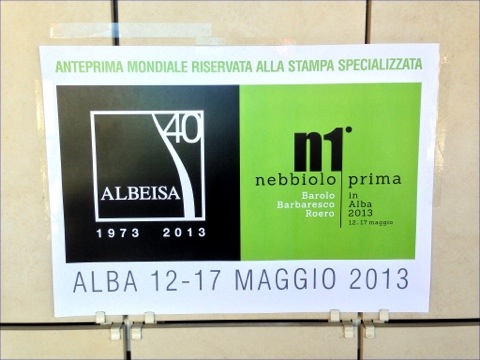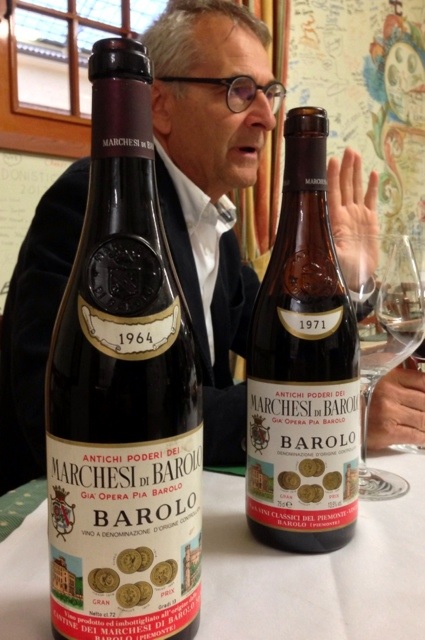Barolo bliss
Posted on 17 May 2013
I finished a winery visit early so someone gave me a lift to the nearest town. I knocked at the first door and there was a magnum of 1988 Barolo being poured. The room was filled with roses, tar, leather and truffle and the taste was interminable. Still in bliss, I walked a hundred yards down the same street and another cellar door was open. On the table were pristine bottles of Barolo with 1982, 1971 and 1964 on their neck labels.
It is actually a true story. I am in Piedmont for Nebbiolo Prima, the yearly preview of new vintages of Barolo and Barbaresco. (An archive page for my articles from 2010, 2011 and 2012 is here.) This year has been no different from others: a hypnotising immersion into the world of Nebbiolo, that special grape which has the colour of rosé, the acidity of white wine and the tannins of the staunchiest red.
We looked at vintages that are being released now: 2009 Barolo, 2010 Barbaresco and Roero, as well as Riservas from 2007–09. I’ll elaborate on these vintages in another post but in a nutshell, 2009 Barolo fared better than expected for this hot, dry vintage. There might be fewer outstanding wines than in 2008 or 2006 but the wines are balanced with good fruit and thankfully, not overalcoholic or stewed as expected. By universal agreement it is a slightly better vintage than the similarly hot 2007.
Oh, that 1988 magnum was opened by Maria Teresa Mascarello, a wine still made by her legendary father Bartolo. A mix of young and old, it showed beautiful cherry fruitiness for a wine aged 31 and remained what the Mascarello Barolo has always been about: pride and heritage. The three other old vintages came from Marchesi di Barolo (whose reserve of old wines is staggering). I thought the 1982 showed incredibly, almost unbelievebly young, while two different bottles of the 1964 showed a little advanced, though delicious and engaging. It was the 1971 that stole the show: majestically concentrated and expressive, it explodes on the palate with an almost lemony acidity that is the vintage’s hallmark.
More on my Piedmont adventures soon.
Disclosure: my trip to Piedmont including flights, accommodation and wine tasting programme is sponsored by the Albeisa association of local wine producers.




